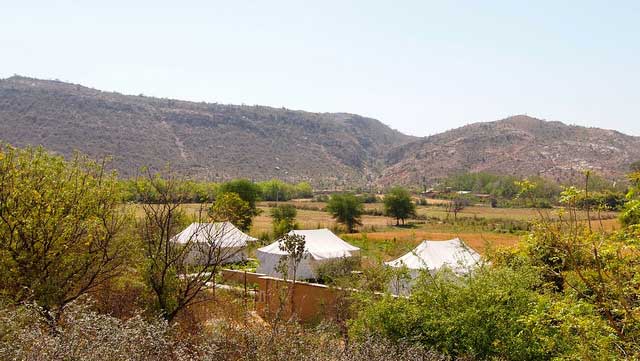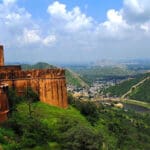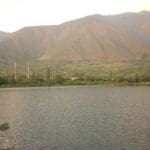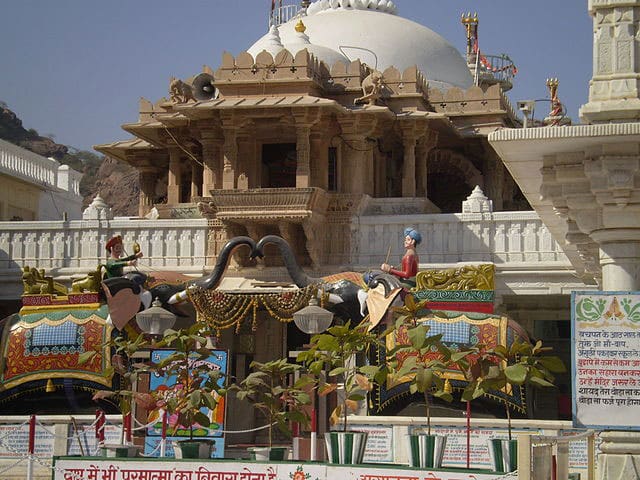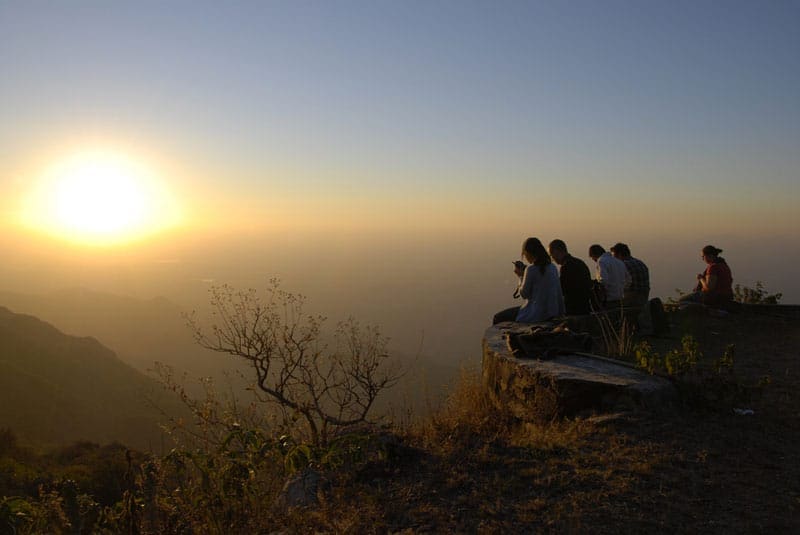Rajasthan, famously known for its majestic forts, rich cultural heritage, and vast Thar desert, is equally a sanctuary of biodiversity and incredible wildlife experiences. The state’s national parks and tiger reserves serve as critical havens for endangered species, lush forest ecosystems, and rare birds, with diverse terrains from desert dunes to dense woodlands and hill retreats.
- 1. Ranthambore National Park: The Legendary Royal Tiger Reserve and Wildlife Sanctuary
- Overview and Historical Context
- Wildlife Diversity
- Birdlife
- Historical and Cultural Significance
- Safari Zones and Experience
- Accommodation and Accessibility
- Conservation and Community
- 2. Sariska Tiger Reserve: Rajasthan’s Tiger Comeback Story and Historic Hills
- Introduction and Geography
- Ecological Profile and Wildlife
- Avian Diversity
- Cultural and Historical Significance
- Safari Details
- Visitor Information
- Conservation Initiatives
- 3. Keoladeo Ghana National Park: The Birdwatcher’s Paradise and UNESCO Wetland Marvel
- Location and Background
- Avian Richness
- Flora and Habitat
- Other Fauna
- Visitor Experience
- Best Time to Visit
- Conservation Challenges
- 4. Desert National Park: The Ecological Jewel of the Thar Desert
- Geographical Extent and Ecosystem
- Unique Wildlife
- Paleontological Importance
- Visitor Activities
- Travel Logistics
- Conservation Focus
- 5. Mount Abu Wildlife Sanctuary: The Aravalli Hills’ Verdant Biodiversity Haven
- Ecological and Topographical Description
- Floral Wealth
- Faunal Richness
- Tourist Attractions
- Visiting Tips
- Choosing the Right National Park for Your Wildlife Adventure
- Sustainable Tourism Practices and Conservation Etiquette
- Visitor Information and Preparations
- Frequently Asked Questions
This guide aims to provide an exhaustive exploration of the top 5 national parks in Rajasthan—highlighting the unique ecological attributes, abundant flora and fauna, historical significance, complete travel insights, and practical tips to help you make the most of your visit.
1. Ranthambore National Park: The Legendary Royal Tiger Reserve and Wildlife Sanctuary
Overview and Historical Context
Ranthambore National Park, situated in the Sawai Madhopur district, spreads over an impressive 1,334 square kilometers, making it one of India’s largest and most famous protected areas. Originally a hunting ground for the Maharajas of Jaipur, the park was declared a wildlife sanctuary in 1955 and later elevated as a national park in 1980. It became a Tiger Reserve under Project Tiger in 1985, gaining worldwide fame for its thriving Bengal tiger population.
The park’s varied geography features undulating hills of the Vindhya and Aravalli ranges, dry deciduous forests, steep cliffs, seasonal lakes, and ancient ruins—all forming a complex landscape that supports rich biodiversity.
Wildlife Diversity
-
Bengal Tiger (Panthera tigris tigris): Ranthambore is regarded as one of the best tiger habitats in India. The tiger density here, due to excellent prey availability and habitat, is among the highest. Sightings are common, especially during waterhole visits in the dry months.
-
Large Mammals: Besides tigers, the park is home to Asiatic leopards, sloth bears, striped hyenas, jackals, and wild dogs (dholes). Herbivores abound, such as sambar deer, chital (spotted deer), nilgai (blue bull), four-horned antelope (chousingha), and wild boars, which form the prey base sustaining the carnivores.
-
Smaller Fauna and Reptiles: Including monitor lizards, Indian rock pythons, and a variety of snakes and frogs.
Birdlife
Ranthambore is a birdwatcher’s paradise with over 320 species recorded. Notables include:
-
Raptors like crested serpent eagle, changeable hawk-eagle, white-eyed buzzard.
-
Water birds such as painted storks and various herons frequent seasonal lakes.
-
Resident and migratory species enrich the forests and grasslands.
Historical and Cultural Significance
-
Ranthambore Fort: The iconic fort inside the park is a UNESCO World Heritage Site and dates back to the 10th century. It offers panoramic views of the park and interesting archaeological remnants.
-
Temples such as the Trinetra Ganesh Mandir add religious significance.
-
The park’s cultural history blends tales of valor, royal hunting, and local folklore.
Safari Zones and Experience
Ranthambore is divided into 10 safari zones. Zones 1-5 are the most popular for frequent tiger sightings but require advance booking due to heavy demand. Zones 6-10 offer quieter, less frequented areas with rewarding sightings of other wildlife.
-
Safari Vehicles: Safaris are conducted in open-top gypsies or canters, led by trained guides who share detailed information on flora, fauna, and park history.
-
Best Time for Safari: October to June, with March to June being prime for tiger spotting as water sources reduce, concentrating animals.
Accommodation and Accessibility
Sawai Madhopur has a range of accommodations:
-
Luxury heritage resorts like the Ranthambore Regency.
-
Eco-lodges offering immersive wilderness experiences.
-
Budget hotels and guesthouses for backpackers.
The nearest railway station and airport both connect Sawai Madhopur to major cities like Jaipur and Delhi.
Conservation and Community
Ranthambore plays a key role in regional conservation, with programs to prevent poaching, encourage local community involvement, and rehabilitate injured wildlife.
2. Sariska Tiger Reserve: Rajasthan’s Tiger Comeback Story and Historic Hills
Introduction and Geography
Located in the Alwar district, Sariska Tiger Reserve covers about 866 square kilometers within the Aravalli hill ranges, featuring dry deciduous forest, rocky hills, and scattered grasslands, all with an elevation between 300-650 meters.
Declared a tiger reserve in 2005, Sariska made headlines from 2004 to 2012 for a tragic local extinction of tigers but has since witnessed a remarkable recovery due to animal translocations and habitat management.
Ecological Profile and Wildlife
-
Tigers: Present after reintroduction efforts, Sariska now houses several resident tigers actively monitored by conservation authorities.
-
Other carnivores include leopards, striped and great Indian hyenas, jackals, and smaller cats like jungle cats.
-
Herbivores such as chital, nilgai, sambar, and wild boars form critical prey.
-
Reptiles like Indian rock python and monitor lizards thrive.
Avian Diversity
Over 200 bird species inhabit Sariska:
-
Peafowl, parakeets, drongos, and raptors dominate views.
-
The perennial Siliserh Lake attracts aquatic birds such as ducks, herons, and egrets.
Cultural and Historical Significance
Sariska harbors ancient temples such as the Pandupol Hanuman Temple, a site steeped in mythology linked to the Pandava brothers of the Mahabharata.
The Kankwari Fort, lying within the reserve, dates to the 17th century and offers evocative ruins and magnificent views.
Safari Details
-
Park tours operate twice daily, with an option for morning or evening safaris.
-
Jeep safaris cover rugged routes reaching all corners of the reserve.
-
Popular for smaller visitor groups seeking a more intimate wildlife encounter.
Visitor Information
-
Closed on specific weekdays to allow wildlife undisturbed rest.
-
Best visited October to June, with cooler months preferred for comfort.
-
Camping (with permission) is allowed in designated areas for special eco-tourists.
Conservation Initiatives
Sariska’s ongoing conservation efforts include dedicated patrol teams, community outreach programs, and wildlife corridors to connect fragmented habitats.
3. Keoladeo Ghana National Park: The Birdwatcher’s Paradise and UNESCO Wetland Marvel
Location and Background
Situated near Bharatpur city, this park, once a royal duck hunting reserve, is a man-made wetland eco-system spanning about 29 square kilometers. It is recognized internationally as a UNESCO World Heritage Site due to its unmatched avifaunal diversity.
Created by constructing dams and canals, Keoladeo Ghana serves as a critical refuge for birds migrating from as far as Siberia and Central Asia.
Avian Richness
-
Home to over 370 species of birds, including globally threatened species such as the painted stork, Siberian crane (historically), sarus crane, ferruginous ducks, and black-necked storks.
-
The wetlands also attract migratory waterfowl, raptors, and myriad resident species, forming one of the most diverse bird habitats in Asia.
-
Pelicans, cormorants, herons, and kingfishers are prolific, with seasonal peaks during winter.
Flora and Habitat
-
The park’s swampy terrain is a complex matrix of open water, marshes, reed beds, and dry grasslands.
-
Aquatic plants provide essential support for invertebrates and fish that feed birds.
-
Native trees include babul (Acacia), neem, and eucalyptus patches.
Other Fauna
-
Mammals such as golden jackals, fishing cats, nilgai, and wild boar inhabit the periphery.
-
Reptiles like water snakes, monitor lizards, and pythons are common.
Visitor Experience
-
Exploration modes include guided foot trips, bicycle tours, rickshaw rides, and horse-drawn tongas.
-
Local guides double as naturalists, enriching bird identification and ecological understanding.
-
The park is especially magical at dawn and dusk when birds are most active.
Best Time to Visit
October to March sees maximum migratory arrivals, culminating in peak activity between December and January.
Conservation Challenges
Threats include water scarcity due to dam regulations and pollution; ongoing restoration efforts focus on hydrological management and invasive species control.
4. Desert National Park: The Ecological Jewel of the Thar Desert
Geographical Extent and Ecosystem
Covering a vast 3,162 square kilometers, Desert National Park near Jaisalmer and Barmer represents one of the largest protected dryland ecosystems in India. The park offers a rare combination of sand dunes, salt pans, rocky cliffs, and sparse scrub forest.
Unique Wildlife
-
Great Indian Bustard: The park is arguably the last stronghold of this critically endangered bird, one of the heaviest flying birds globally.
-
Other birds include larks, harriers, vultures, sandgrouse, and desert wheatears.
-
Mammals such as the elusive Indian wolf, desert fox, chinkara (Indian gazelle), and blackbuck thrive here.
-
The sensitive desert biome also supports arthropods, reptiles, and small mammals uniquely adapted to arid conditions.
Paleontological Importance
-
The park is a treasure trove of Jurassic dinosaur fossils and other prehistoric plants and animals, making it a hotspot for scientific study.
Visitor Activities
-
Jeep safaris cover dune tracks and salt flats.
-
Camel safaris provide an immersive desert experience.
-
Night drives offer the chance to spot nocturnal desert wildlife.
Travel Logistics
-
Cool weather from October to March is ideal. Summer months are extremely hot and inhospitable.
-
Visitors are advised to carry strong sun protection, ample water, and dust-proof gear.
Conservation Focus
Efforts focus on protecting the Great Indian Bustard and mitigating human-wildlife conflict through community engagement and habitat restoration.
5. Mount Abu Wildlife Sanctuary: The Aravalli Hills’ Verdant Biodiversity Haven
Ecological and Topographical Description
Mount Abu, the only hill station in Rajasthan, hosts this sanctuary sprawling over 288 square kilometers amid the Aravalli Hills. The terrain is dense with thick forest cover, craggy granite formations, and flowing streams creating a cooler, more humid microclimate contrasting dramatically with the state’s arid plains.
Floral Wealth
-
Houses over 800 plant species, including rare orchids, medicinal herbs such as the ‘Brahmakamal’, wild roses, ferns, and extensive shrubbery.
-
Diverse forest types ranging from tropical dry deciduous to riverine patches.
Faunal Richness
-
Mammals: Leopard, sloth bear, sambar deer, wild boar, Indian hare, and a variety of primates.
-
Birds: Nearly 250 species featuring grey junglefowl, green avadavat (endemic sparrow), trogons, and woodpeckers.
-
Reptiles and insects are especially diverse in this moist environment.
Tourist Attractions
-
Several well-marked trekking and nature trails.
-
Scenic viewpoints offering panoramic views of Nakki Lake and granite hills.
-
Waterfalls during monsoons provide spectacular sights.
Visiting Tips
-
Best visited in cooler months (October to March).
-
Hiking requires appropriate footwear and water.
-
Guided walks enrich knowledge of local ecology and culture.
Choosing the Right National Park for Your Wildlife Adventure
-
For Tigers: Ranthambore and Sariska offer the highest chances due to their robust tiger populations.
-
For Birdwatchers: Keoladeo is unparalleled, with its critical avian diversity.
-
For Desert Ecosystems: Desert National Park’s unique biome offers an extraordinary experience.
-
For Hill and Botanical Enthusiasts: Mount Abu provides a green oasis with a rich variety of species and cooler climate.
Sustainable Tourism Practices and Conservation Etiquette
-
Respect park regulations explicitly, including entry timings, waste disposal, and photography rules.
-
Support eco-friendly accommodations and local businesses that contribute to conservation.
-
Avoid plastic and minimize noise pollution to protect sensitive wildlife.
-
Participate in guided tours to reduce ecological footprint and gain educational value.
Visitor Information and Preparations
-
Safaris often require advance booking through official websites or local booking offices.
-
Best times vary but mostly avoid monsoon season when parks are closed.
-
Prepare for temperature variance—desert parks get very cold at night, while hill sanctuaries are cooler.
-
Carry binoculars, cameras with telephoto lenses, insect repellent, and first aid kits.
Frequently Asked Questions
-
What are the peak months for tiger sightings in Rajasthan?
-
Primarily from March to June in Ranthambore; Sariska offers good chances October to June excluding the monsoon.
-
-
Is Keoladeo Ghana suitable for casual birdwatchers?
-
Absolutely. It is accessible and has structured tours catering to beginners and experts alike.
-
-
Can I camp overnight in any of these parks?
-
Camping policies vary; permits are required, generally allowed in designated areas like Sariska; check park authorities.
-
-
Are there age restrictions for children on safaris?
-
Some parks restrict young children for safety; check specific park rules before planning.
-
-
How do I reach Desert National Park?
-
Nearest airports are Jaisalmer and Jodhpur, followed by jeep or camel safaris starting from town.
-
-
What kind of clothing is recommended for park visits?
-
Neutral-colored, lightweight clothes during the day, warmer layers in the evening; sturdy footwear recommended.
-
-
Are drones allowed in these parks?
-
No, drones are prohibited across all Indian national parks to protect wildlife.
-
-
What languages do guides typically speak?
-
English and Hindi are common; some guides speak regional dialects.
-
-
How prevalent is the risk of mosquitoes or other insects?
-
Minimal in dry seasons; carry insect repellent in wetter months, especially in Keoladeo and Mount Abu.
-
-
Can I photograph wildlife freely in the parks?
-
Yes, but respect no-flash policies and avoid disturbing animals. Professional photography may require permits.
-


